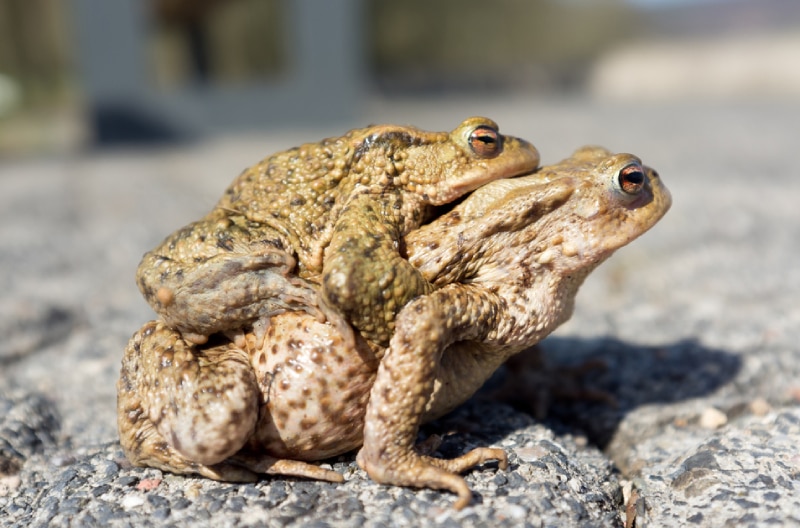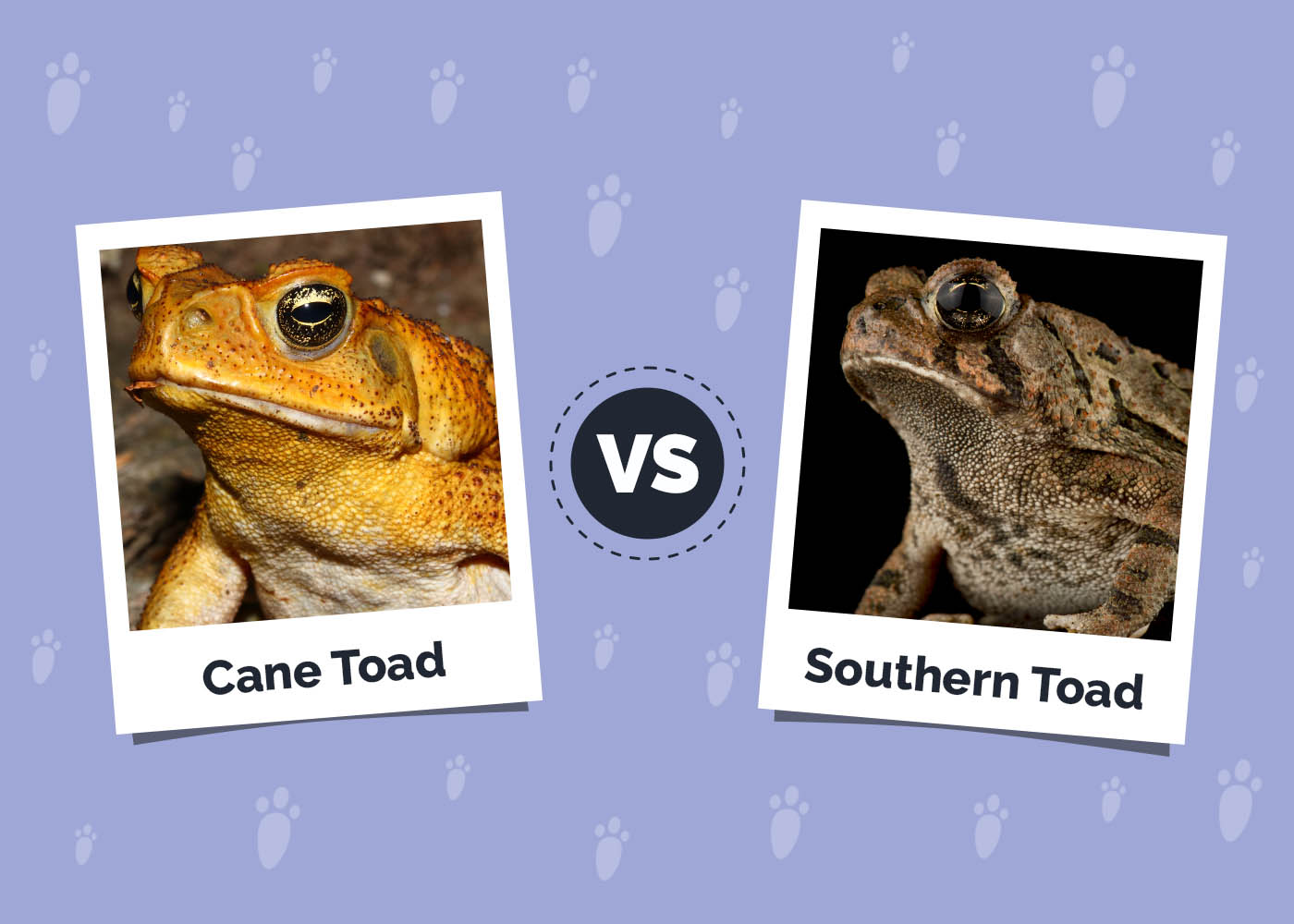20 Fascinating Pacman Frog Facts for Amphibian Lovers (Vet Verified)
By Jordyn Alger
Updated on
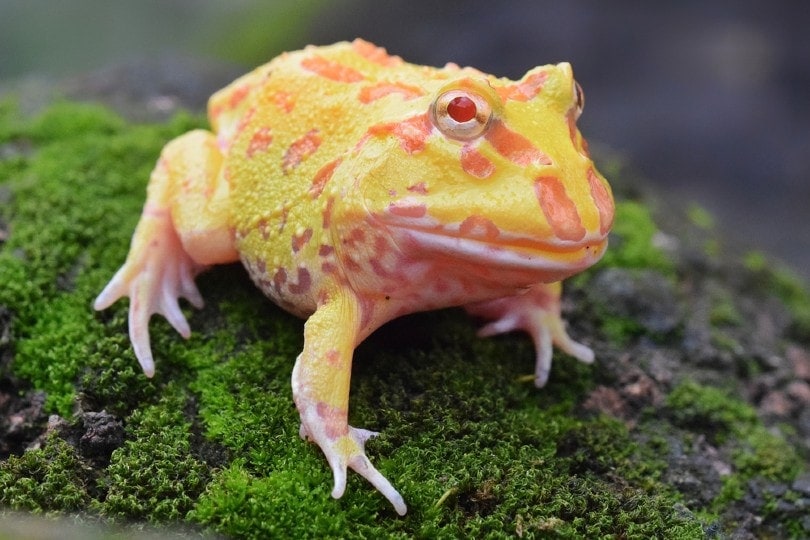
There are thousands of frog species all over the world, each having their own unique qualities. If you are looking for a frog that is suitable for a first-time frog owner yet still interesting, you may want to consider the Pacman frog (Ceratophrys).
Some believe the Pacman frog is among the most fascinating frog genera currently known. They are large, colorful, and even comical, making them fun for their caretakers. To learn more about this incredible frog genus, keep reading for 20 Pacman frog facts.
The 20 Pacman Frog Facts
1. Their Name Comes From the Classic Video Game
If the Pacman frog’s name sounds familiar to you, chances are you’ve played the classic “Pac-Man” video game once or twice. Since Pacman frogs are huge and round and have massive mouths, they were suitably named after the large-mouthed video game character.
Their size and shape are not the only qualities that make the frog similar to Pac-Man. These frogs tend to eat anything moving in front of them, similar to how the video game character munches on dots and ghosts throughout the maze. If you’re a fan of frogs and video games, the Pacman frog may be the perfect fit for you!
2. They Are Native to South America
The Pacman frogs are a genus of terrestrial burrowing frogs native to South America. Most of them are found in Brazil, within the Amazon Basin. However, they can be found in other regions throughout the continent, such as Uruguay and Argentina.
Although they are best suited for the climate of the South American rainforest, that does not mean that the Pacman frog cannot thrive as a pet in other areas of the world. However, this does require ensuring that the enclosure you keep your pet in provides proper heating, lighting, and moisture levels for your frog to thrive.
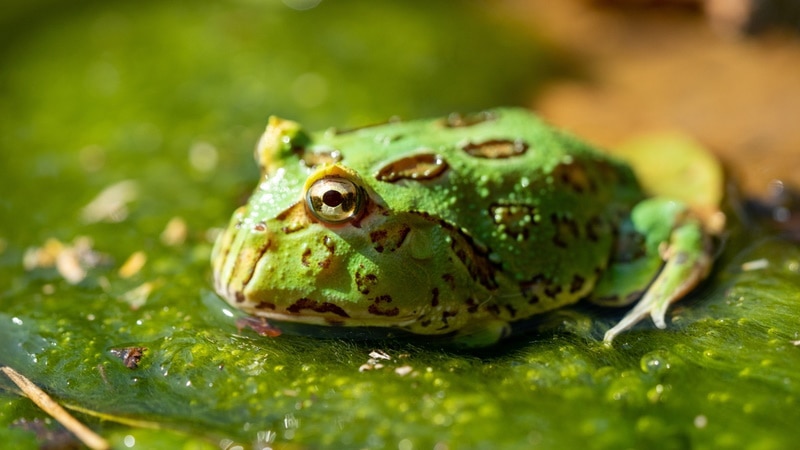
3. They Have Other Names
If you’ve never heard of the Pacman frog before, there is a chance that you’ve only heard them being called by one of their other names. For example, the Pacman frog is sometimes referred to as one of the species within the genus, such as the Argentine Horned Frog.
There are eight species of frogs in the genus Ceratophrys. Not all are kept as pets, though. The most recent addition to the genus, the Ecuadorian Horned Frog (Ceratophrys testudo), is not considered a pet.
4. They Are Excellent Pets
The Pacman frog is relatively easy to care for, especially compared to pets like cats and dogs, making them an excellent companion for novice and experienced frog owners. This frog will always be doing something entertaining, and they are fun to observe.
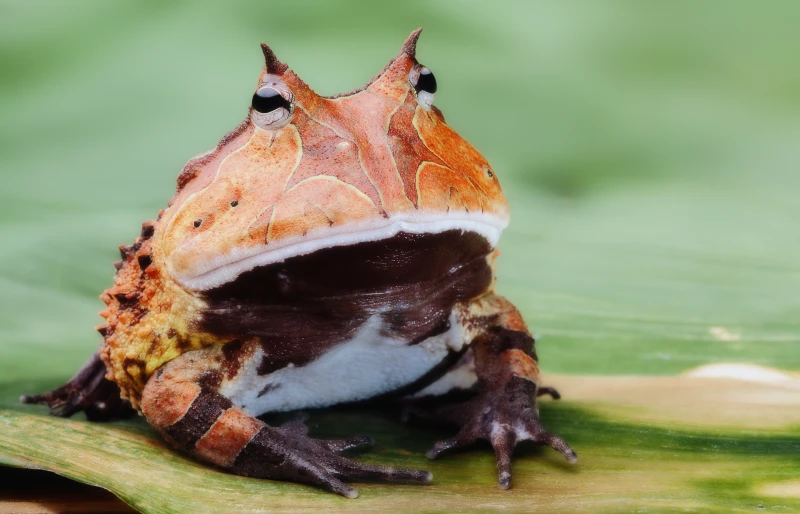
5. They Thrive in Fresh Water
Like most frogs, the Pacman frog does best in fresh water. Specifically, this species enjoys marshes and pools. Not only does the Pacman need a source of fresh water for drinking, but they also need it for reproduction.
However, the Pacman frog is not a very good swimmer. While you should provide a source of clean water for your frog, make sure it is not too deep. Pacman frogs may enjoy and thrive near fresh water, but for the most part, they only spend a little bit of time inside the water to lay eggs.
6. They Shouldn’t Be Handled With Bare Hands
One of the main concerns of owning a Pacman frog as a pet is how challenging handling them can be. They have exceptionally delicate skin, so much so that the oils from your hand can irritate your pet.
Even worse, the oils or debris on your hand can become trapped in your frog’s skin. Most frogs breathe through their skin, so it can impede their breathing when something clogs up their skin. For this reason, it is best to handle your Pacman frog only when strictly necessary.
The risk isn’t just to your frog, though. Amphibians naturally harbor pathogens that can be harmful to humans, such as Salmonella spp. Even apparently healthy pets can be carriers of such pathogens. This is another reason that you should not handle your pet unless absolutely necessary.
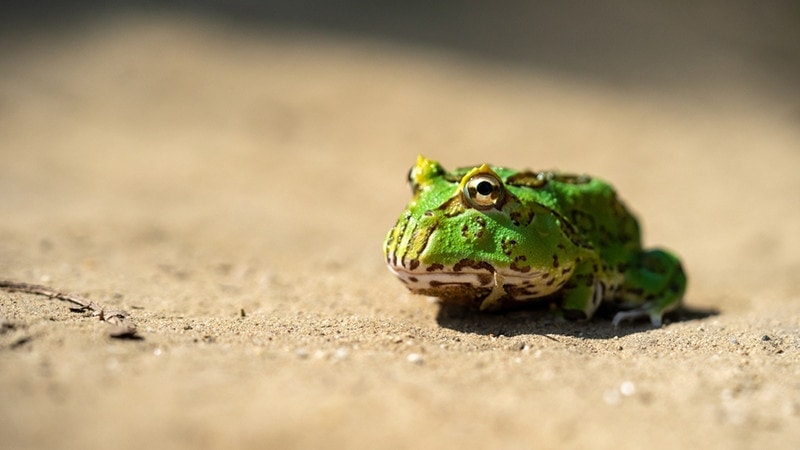
7. They Live for a Long Time
Another reason the Pacman frog makes such a good pet is that they can live for a long time. While the Pacman frog’s natural lifespan in the wild may be shorter, as pets, they are known to live 10–15 years in terms of longevity records1. The record within the genus is held by the Colombian Horned Frog (Ceratophrys calcarata), at 15.9 years. However, note that these are records, not average estimates.
8. They Spend a Lot of Time Eating
As mentioned, the Pacman frog’s eating habits resemble those of their video game namesake. This frog keeps eating! They are known to have a voracious appetite and will eat anything that moves in front of them. It will be made into a meal as long as it is alive and within the Pacman frog’s range.
While the Pacman is typically placid, they can quickly perk up when they think that you’re bringing dinner. Some Pacman frog owners have reported that their frogs will even leap against the sides of their enclosure in their excitement to chow down.
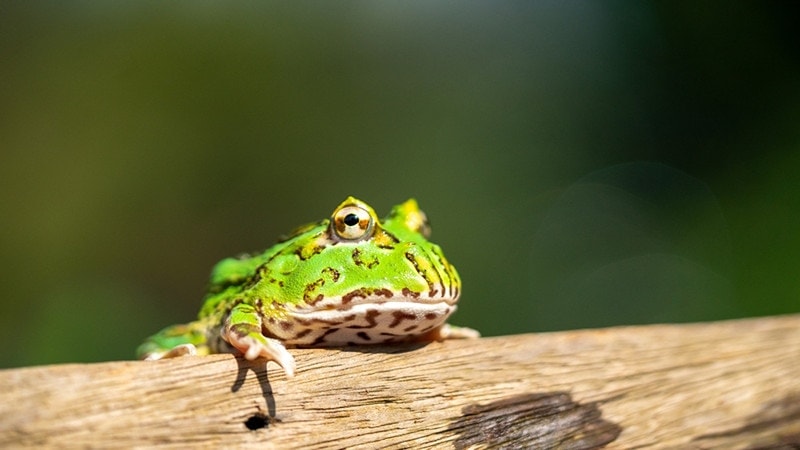
9. They Lie in Wait for Their Prey
Since the Pacman frog is a terrestrial burrowing animal, they can typically be seen burying themselves in mud or among a layer of fallen leaves. The only way to spot the frog is to find their eyes protruding from their burrow.
Hidden beneath the dirt like this, Pacman frogs bide their time and wait for prey to cross their path. When an unfortunate animal does, the Pacman frog will attack, using their powerful tongue and legs to pull at their prey while lunging at the same time. This hunting tactic is why the Pacman frog is known as an ambush predator.
10. They May Resort to Cannibalism
No one wants to think that their adorable, funny pet can become a cannibal, but in the case of the Pacman frog, cannibalism is not off the table. If you have multiple frogs, whether or not they are the same species, you should keep the Pacman frog separate. If not, they may make an afternoon snack out of your other pets.
In a 2015 study, Dr. Thomas Kleinteich from Kiel University, Germany, discovered the fully intact body of a frog inside the digestive cavity of a Pacman frog. So, it is not unheard of for these frogs to eat each other.
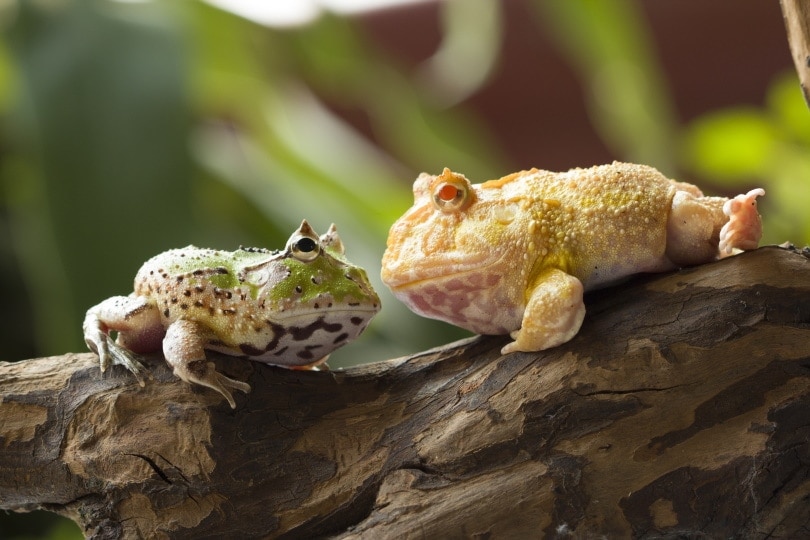
11. Females Are Larger Than Males
Some people expect that the male of a species will always be larger and more physically imposing than the female, but that is not always the case. In the instance of the Pacman frog, the females are bigger. In fact, this is true for most frogs.
Typically, female Pacman frogs range between 4 and 7 inches in length. As for the males, they only grow to be 2 to 4 inches. Due to the size difference, the females may try to eat the males after mating.
12. Males Are More Colorful Than Females
If you want a pet frog full of vibrant colors, you will want to find a male Pacman frog rather than a female. While the females are bigger, the males are more colorful.
Female Pacman frogs generally are tannish in color to blend in with the mud and dead leaves. However, the males may have a variety of colors, ranging from bright lime to rich green.
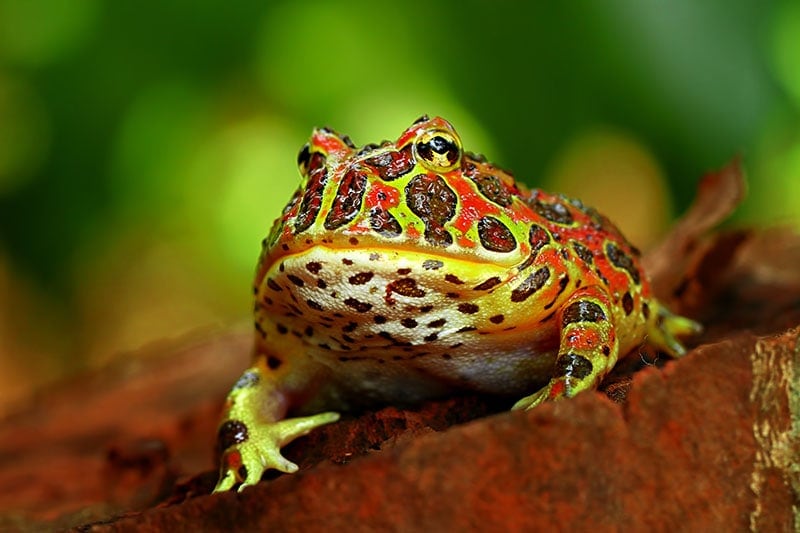
13. They Have Teeth
The Pacman frog isn’t all soft and squishy. They are the only popular pet frog species with both vomerine and maxillary teeth. When a Pacman frog bites down on their prey, the teeth dig in to keep the animal locked in.
This feature is important to remember when handling or feeding a Pacman frog. Although these frogs aren’t typically aggressive, they may bite if they mistake your fingers for food. They can draw blood, so be careful.
14. They Have a Powerful Bite Force
Not only does the Pacman frog have sharp teeth, but they also have a fearsome bite force. A few extinct frogs of similar lineage have been estimated to have bite forces comparable to those of certain mammalian predators2.
This feature is useful due to the prey the Pacman frog tends to target. In the wild, they will eat insects, lizards, mice, and other frogs—all of which are quick animals. To swiftly capture and keep their prey, the Pacman frog must be faster and more powerful.
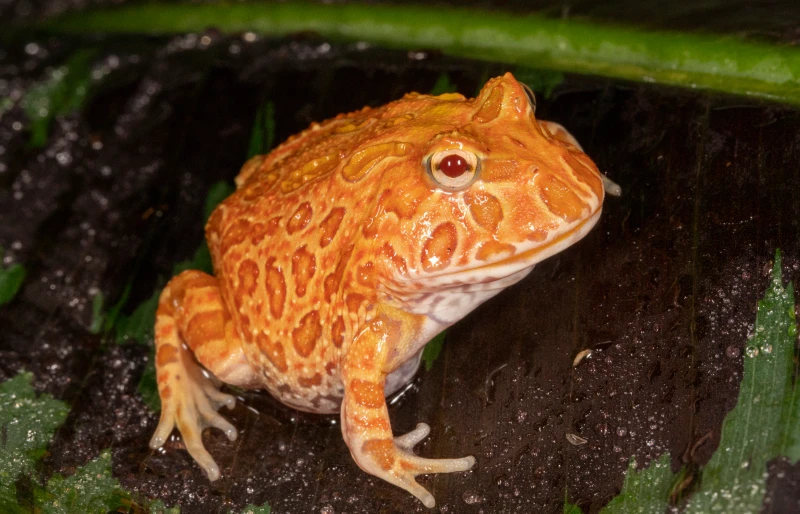
15. They Have Been Known to Accidentally Choke Themselves
You would think that an animal with teeth and a powerful bite force would chew their food, but that’s not the case with the Pacman frog. Instead, they choose to swallow their prey whole. While this generally works fine, there have been instances where it backfires.
Sometimes, the Pacman frog accidentally chokes while trying to swallow prey that is too large. While feeding your frog, be sure that you give them proportional prey only.
16. Habitats That Are Too Dry Can Cause Issues
Proper hydration is essential to your Pacman frog’s health and well-being. If your frog’s habitat is too dry, it can lead to significant issues stemming from dehydration.
Common causes of overly dry habitats include heating pads or overhead lights that are too powerful. While these objects are also essential to your Pacman frog’s health, too much can lead to a loss of moisture.
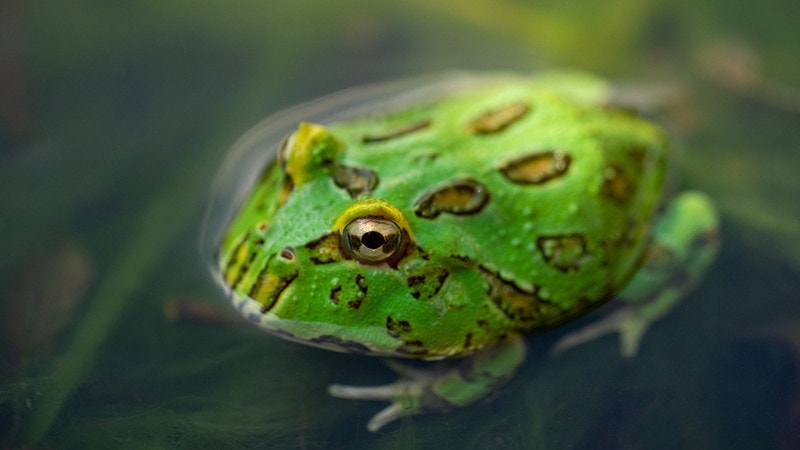
17. They’re Nocturnal
Pacman frogs are nocturnal creatures and are most active at night. They also have great adaptations for low-light vision that help them spot other animals and ambush their prey at night.
18. They Hibernate During Winter
Bears aren’t the only animals that hibernate during the winter. The Pacman frog is known to go into a hibernation of their own called brumation. This is done so the frog can endure the rougher winter weather. The Pacman frog will emerge from brumation when the weather turns warm again.
During this period, the Pacman frog will cease all nonessential bodily functions. Unlike warm-blooded animals, which rely on their fat reserves to endure hibernation, amphibians like the Pacman frog survive primarily by lowering their metabolic rate to a near standstill, effectively not needing much (if any) energy reserves.
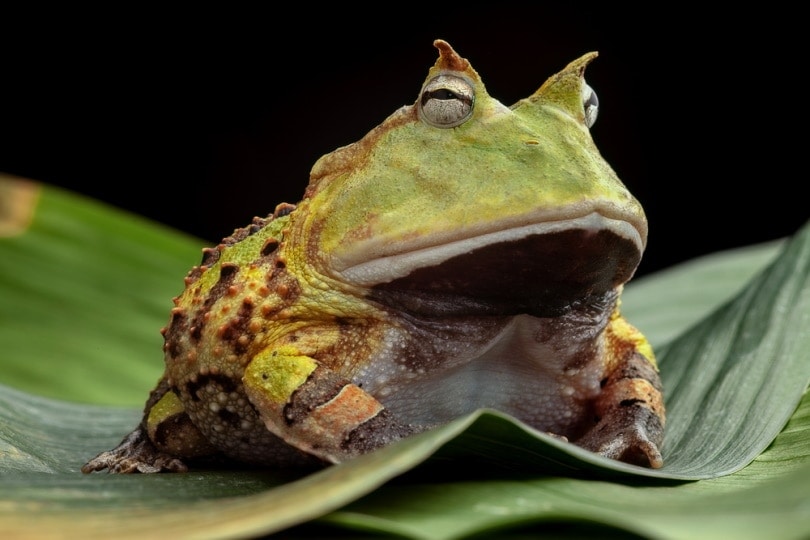
19. They Sleep With Their Eyes Wide Open
There is rarely a time when the Pacman frog will close their eyes. Even when sleeping, the frog keeps their eyes wide open. Some claim that they have observed their Pacman frog blinking while eating, but this is not a true blink. Instead, this is the movement of their nictitating membrane, also known as their third eyelid. It can extend across their entire eye to keep it lubricated.
20. Females Are Much Quieter Than Males
Since Pacman frogs are ambush predators that hide and wait for their prey to walk past, it makes sense that they might not always be croaking or making noise. However, male Pacman frogs are almost constantly chirping in search of a mate. Their calls resemble those of cicadas.
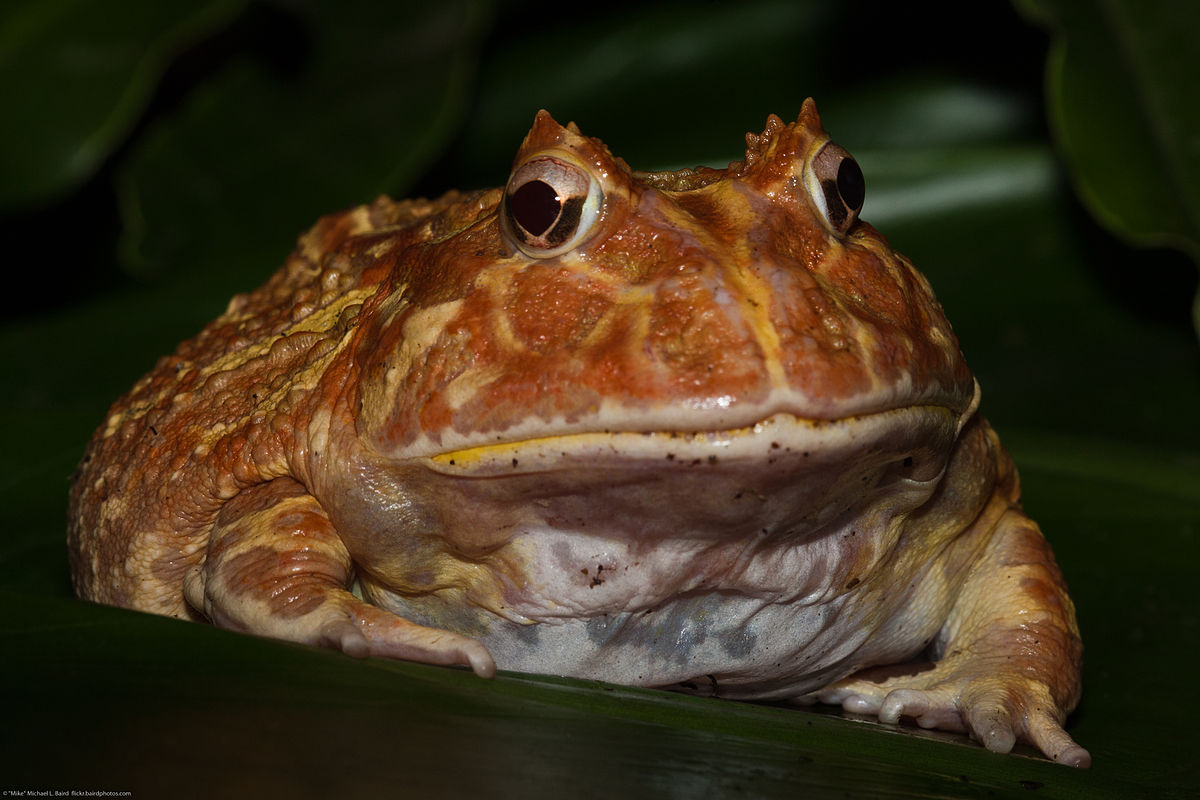
Conclusion
The Pacman frog is a unique and remarkable creature. They make excellent pets, are relatively easy to care for, and are long lived. First-time frog owners and experienced owners alike can get a lot of joy out of having this frog as a companion. We hope this article has helped you learn more about such a fascinating frog.
See Also:
Featured Image Credit: yusuf kurnia, Shutterstock


